While Mumbai should have been one of the first cities in the country to start a metro service (given the paucity of land for building roads), it has been a laggard amongst all Indian metros. Not just Delhi, even Bengaluru started its metro service in October 2013 (before Mumbai). Not just the city, the entire state of Maharashtra has borne the brunt of the state government’s apathy – with literally no infrastructure project of significance commissioned over FY03-13. However, whether it was an effort to gain brownie points before the 2014 central/state elections or a happy coincidence, the city saw multiple mega projects (Eastern Freeway, Metro, Monorail, SantaCruz-Chembur link road, and Integrated International airport terminal T2) commissioned in FY14.
The Mumbai metro masterplan
The MMRDA metro master plan has undergone so many changes in the past three years that it becomes difficult to believe any new route being proposed till its plan and funding are approved and accepted. The new state government proposes to expand the current metro network by 118km, comprising four new lines at an investment of Rs 354bn (Phase 2, 4, 5, and 6). This, along with the underground phase-3, being executed by MMRC (Mumbai Metro Rail Corporation at a cost of Rs 231bn) and the Navi Mumbai Metro (being executed by CIDCO a cost of Rs41bn) are set to expand the Mumbai metro network by a whopping 175km, with an investment of Rs 626bn. The timelines for phases 2A, 3, and 5A have been set aggressively as 2019 – before the next state elections are due. With the two-year delay experienced in phase-1 of the metro, it seems unlikely that these deadlines will be met. However, even if the projects are delayed by a year or two – the city of Mumbai can look forward to a much better public transport system in 2020.
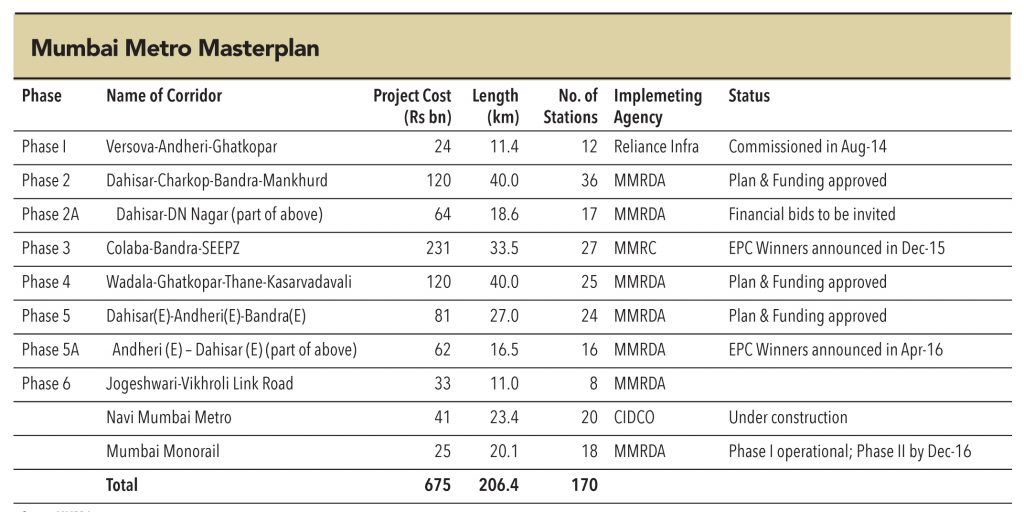
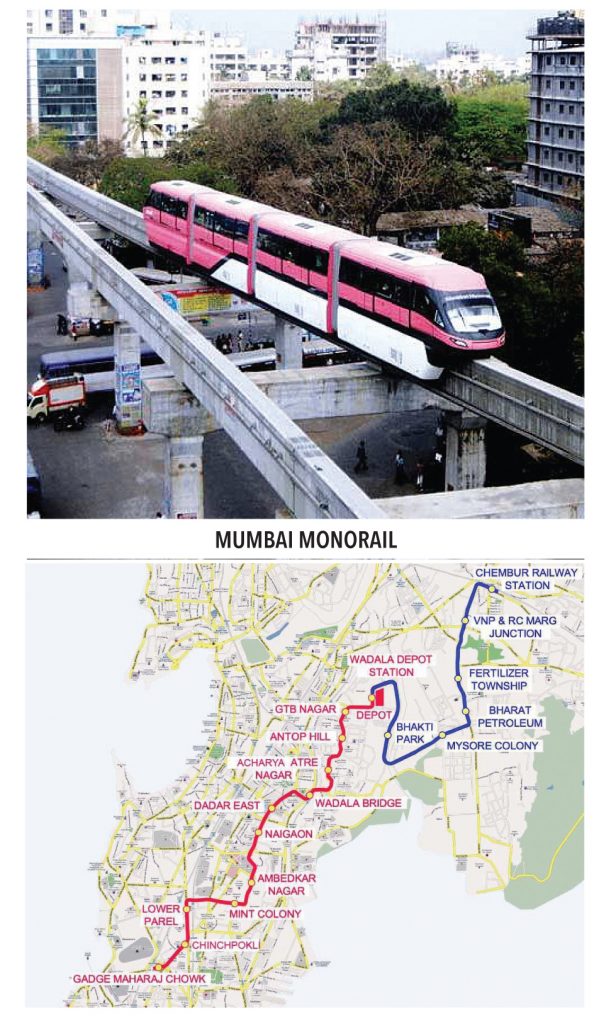
Mumbai Monorail
MMR finally got its first metro/monorail service in December 2013, when the first phase of the Mumbai monorail was thrown open to the public. Constructed by L&T, the monorail currently connects Chembur and Wadala, and intends to extend the connectivity to Mahalaxmi (the beginning of South Mumbai) in the second phase. It has reduced the travel time between Chembur and Wadala from 40 min to 20 min. The project has seen tremendous response since it became operational and the traffic is only expected to grow hereafter.
While everyone has lauded the effort and money invested in making the monorail a success, many have questioned the wisdom of connecting a sparsely populated suburb (Wadala) at the cost of ignoring suburbs that would have actually benefitted more from a similar service. However, the MMRDA strongly defends its decision — “The plan was to provide horizontal connectivity and connect the suburb of Chembur to town. Also, with the ISBT and other developments planned in Wadala, it is expected to become another CBD in the city,” justifies a senior MMRDA official. Phase 2 of the monorail, connecting Wadal to Jacob Circle, is expected to be completed by December 2016.
Mumbai Metro Phase 1 (MM1)
The long wait finally ended in May 2014, when the first phase of Mumbai Metro, built by a Reliance Infrastructure-led consortium on a PPP basis, was thrown open to public. The service has significantly decongested the suburb of Andheri and provided much needed connectivity between western suburb of Versova to the eastern suburb of Ghatkopar. The 10-kms-long service line has 10 stations at equal intervals, implying travellers will find stations every half kilometre from wherever they are on the line. It has reduced travel time between the two ends from 90 minutes to 21 minutes.
Even though the project was much delayed, the construction of the Mumbai Metro can be hailed as an engineering marvel — the track was laid through one of the most densely populated suburbs of the city (Andheri and Ghatkopar). The company had to deploy ‘form traveller’ to build the viaduct above the western express highway (an example of poor and myopic planning, visible all across the MMR region).
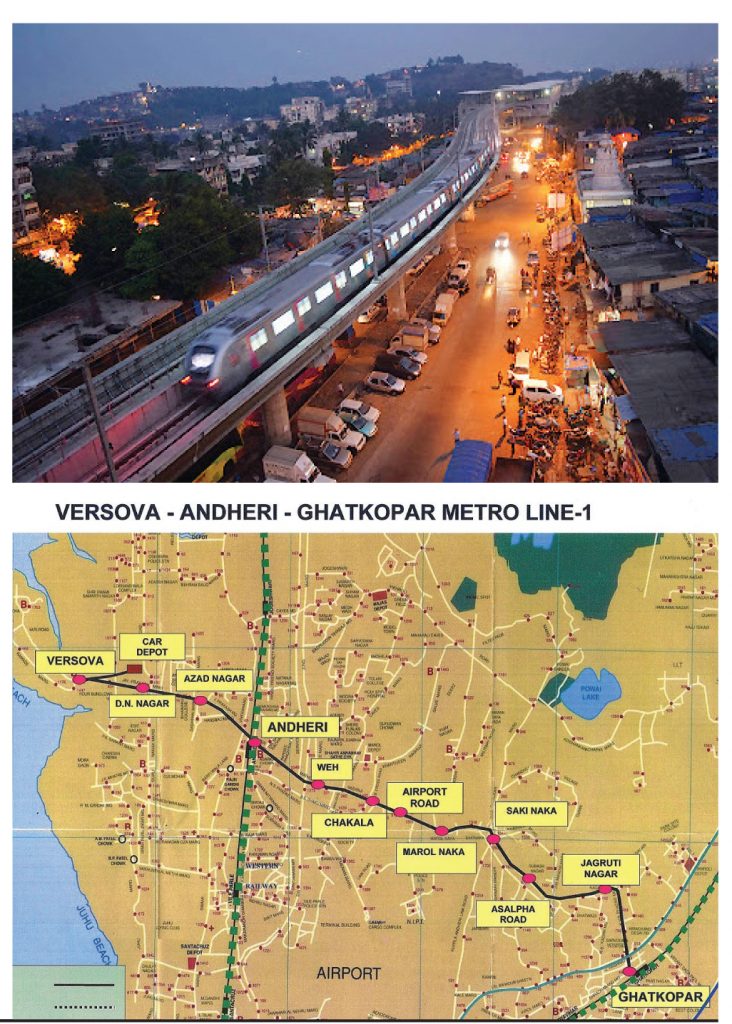
Navi Mumbai Metro (NMM)
The Navi Mumbai metro is being developed by CIDCO, to provide connectivity between various parts of Navi Mumbai, and also to the main island city. The 23.4km line, being built at cost of Rs 40.7bn, is proposed to have 20 stations. The foundation stone of the metro was laid in May 2011, with an initial deadline of December 2014. However, multiple hurdles like clearance from Central Railways for over-bridge, clearance for extending the height of high tension wires, and heavy traffic on Sion-Panvel Highway has meant that the project has faced huge time/cost over-runs.
The project cost for the line-1 of phase-1 has, in the meantime, escalated to Rs 30bn, from an initial Rs 19.9bn. The project has already missed its revised deadline of January 2016 and is now expected to be completed by May 2017. Currently, while 90% of the viaduct work is complete, 50% of station construction, 60% of car depot work, and 35% of overall civil work is pending.
Upcoming phases
The new BJP-led state government seems determined to continue the momentum that propelled it to victory in centre and state elections in 2014. It has been quick to realise the importance of a large and spread-out metro network in the city. Funding for phase-2A, phase-4, and phase-5A of the Mumbai Metro Masterplan has been approved while the winners of EPC contracts for Mumbai Metro Phase 3 (MM3) were announced in December 2015 (the LoAs yet to be signed).
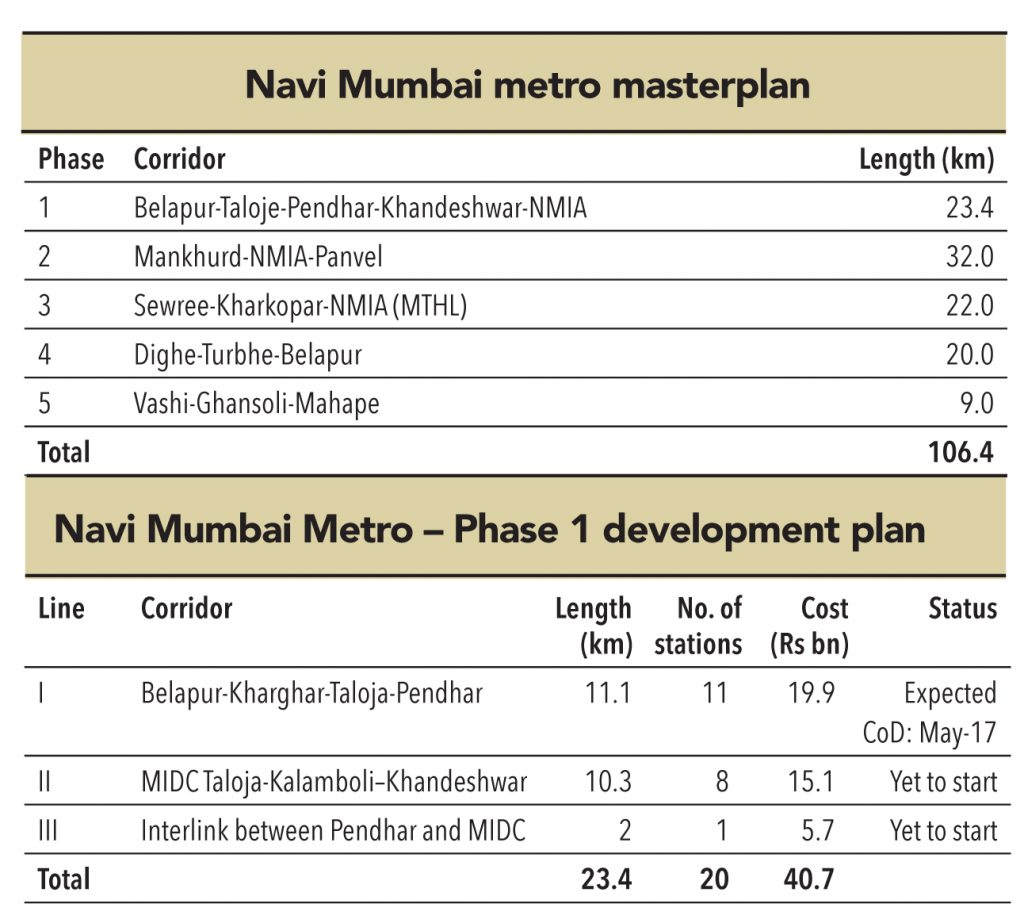
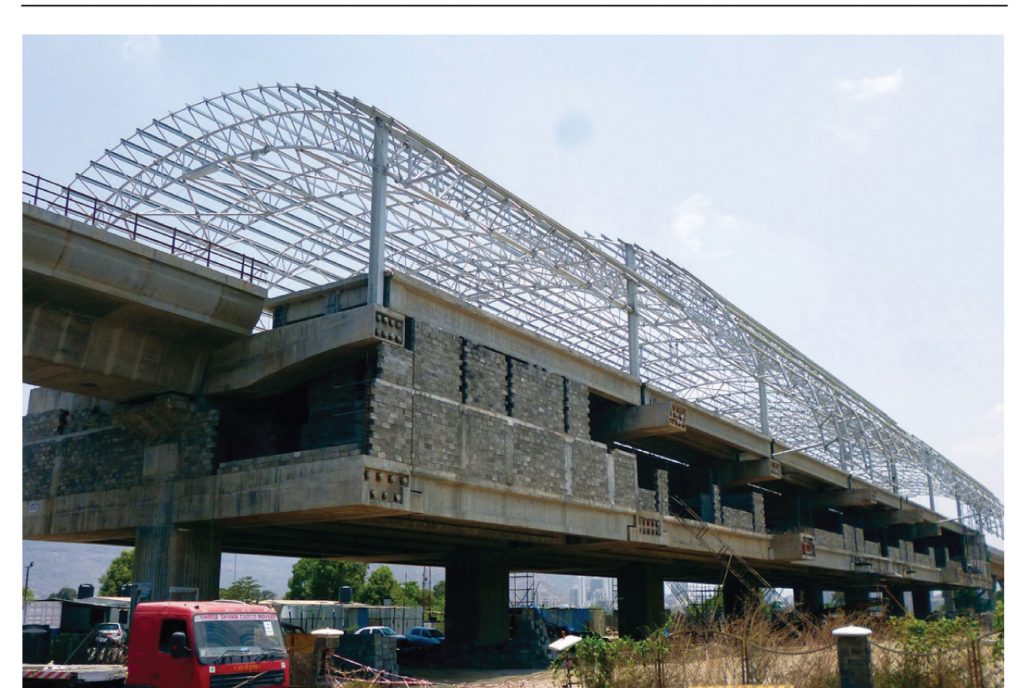
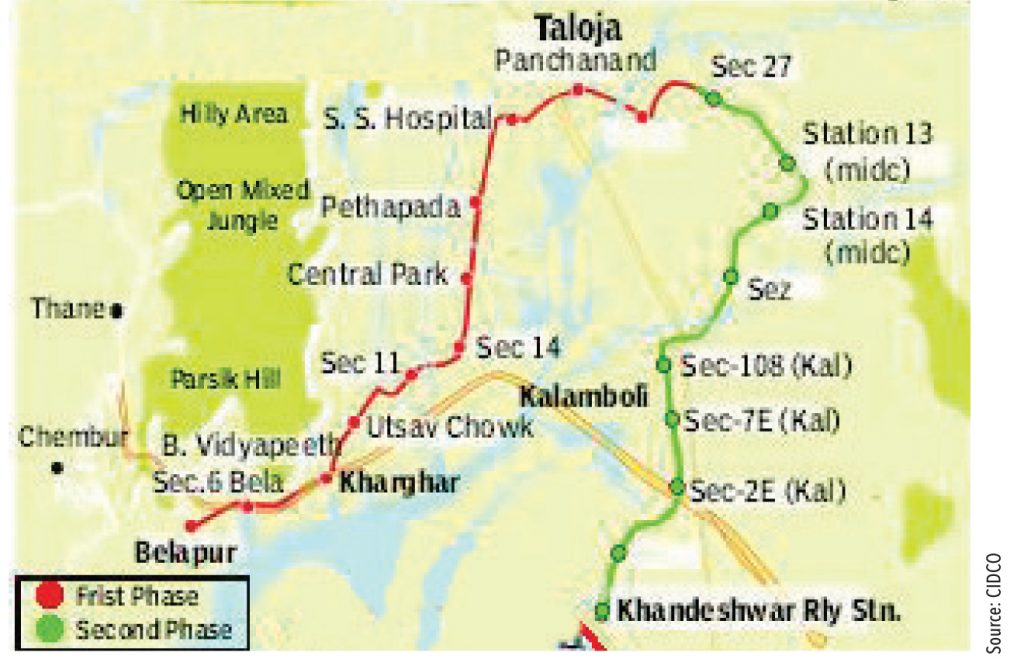
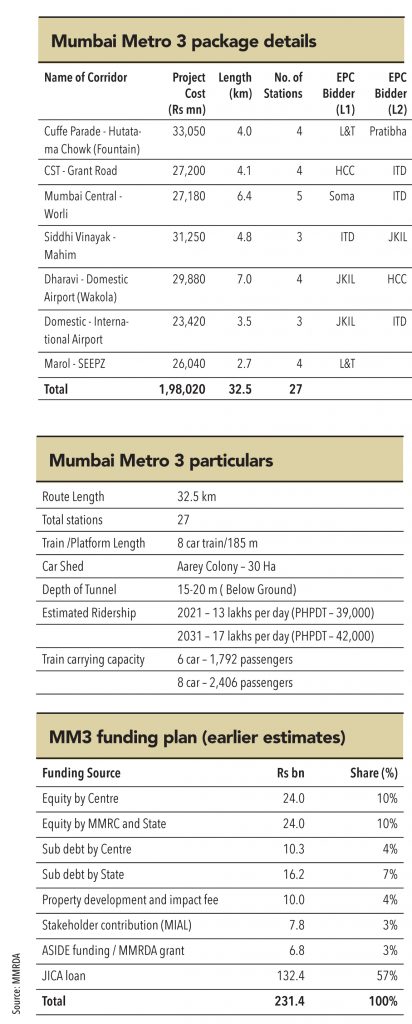
Mumbai Metro Phase 3 (MM3)
The winners of EPC contracts for the much-awaited MM3 were announced in December 2015. The 34km completely underground metro project is highly ambitious and intends to decongest city roads. JICA (Japan International Co-operation Agency) is funding 57% of the total project cost of Rs 231bn, while the central and state governments are funding the rest. The project is expected to be complete by 2020.
While the winners of the EPC packages were declared in December 2015, the MMRDA has not signed the finals LoAs yet. The awarding body is re-evaluating the financing plan of the project in the wake of the recent INR depreciation and higher project costs submitted by the bidders. Hence, the order awards are expected to be delayed and execution is now expected to start only in 2HFY17.
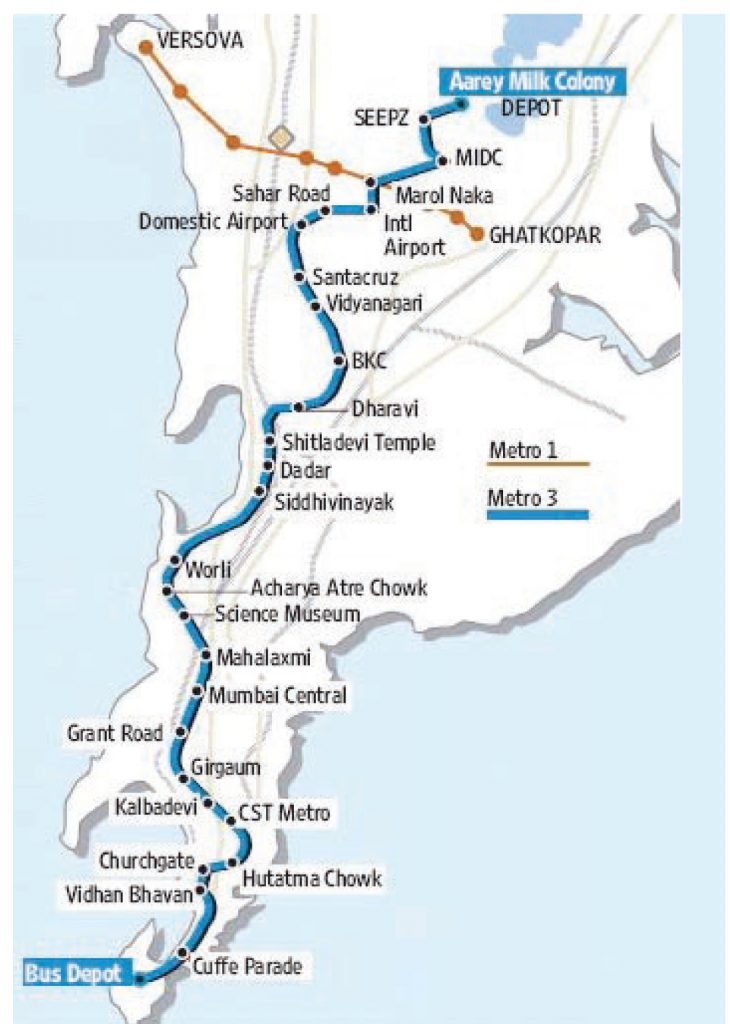
Mumbai Metro Phase 2 and Phase 5 (MM2 and MM5)
In October 2015, the PM inaugurated work for two metro projects – phase-2A (Dahisar-Andheri – 16.5km) and phase-5A (Dahisar-Charkop-DN Nagar – 18.6km). Phase 2A is part of the larger phase-2 (Dahisar-Charkop-Bandra-Mankhurd) which was earlier awarded to Reliance Infra on a PPP basis, but cancelled thereafter. Similarly, phase-5A is part of the larger phase-5 (Dahisar(E)-Andheri(E)-Bandra(E)). The total investment required in phase-2 and phase-5 is Rs 200bn, which has been approved by the state government. Phase-2A and 5A will together cost Rs 126bn, for which the funding plan has been finalised, with 40% loan to be secured from JICA.
On April 18, 2016, MMRDA announced the winners of the three EPC packages for Phase 5A – Simplex Infrastructure, NCC and JKumar Infraprojects. Winners for the EPC packages for phase 2A are expected to be announced in last week of April-2016.

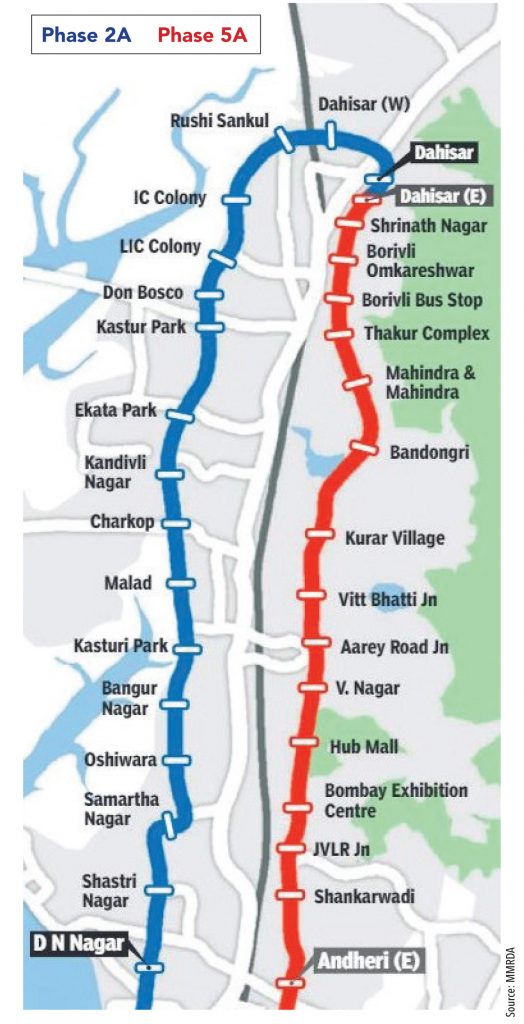

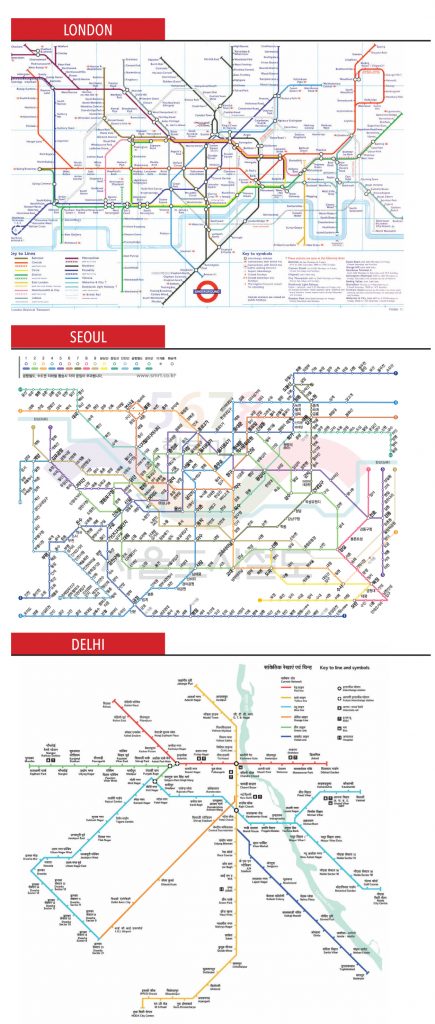
Subscribe to enjoy uninterrupted access